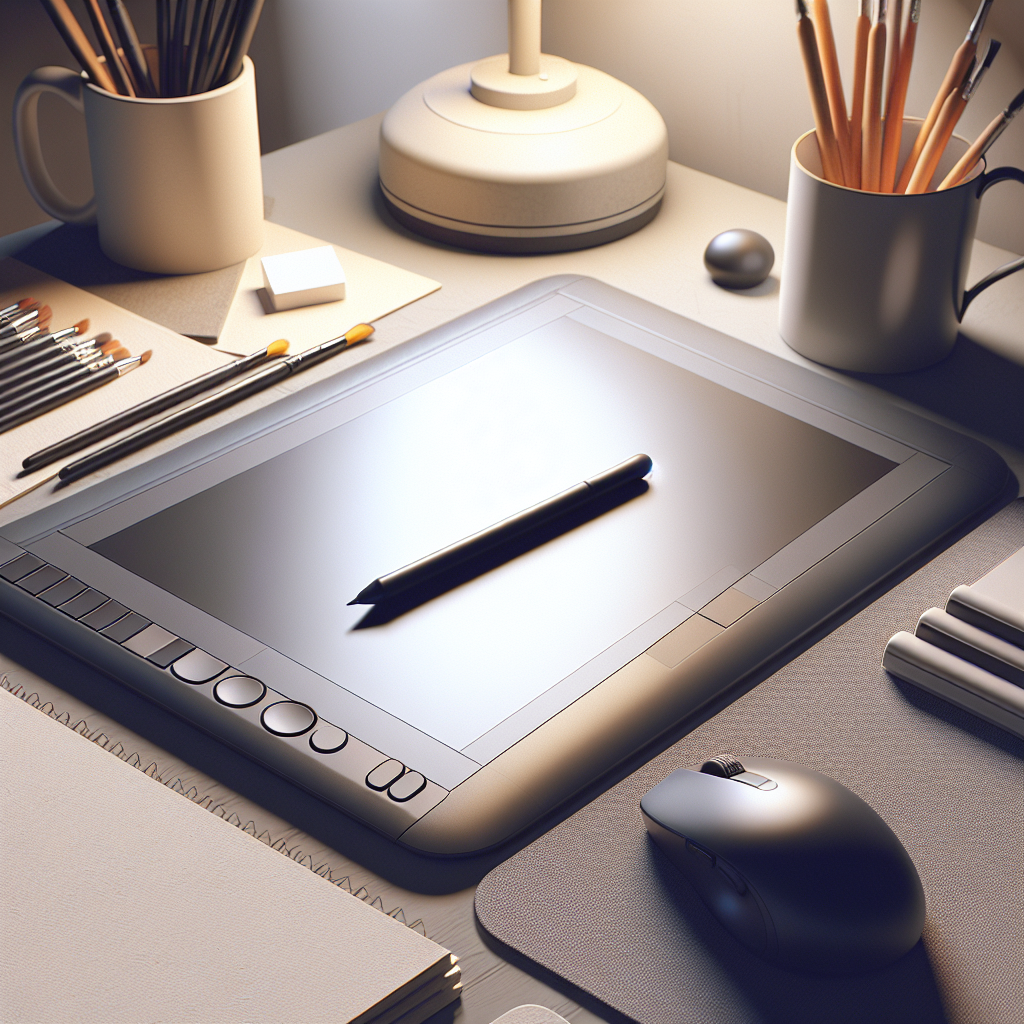Introduction
When it comes to digital drawing, artists often seek the best tools to enhance their creative process. Among these tools are drawing tablets, which allow for precision and fluidity when creating digital art. But a question that arises is whether a traditional mouse pad can be used effectively with a drawing tablet. This article explores the compatibility of mouse pads with drawing tablets, their potential benefits, and how to choose the right surface for your digital art needs.
Understanding Drawing Tablets
Before diving into the compatibility with mouse pads, it’s important to understand what drawing tablets are and how they function. Drawing tablets, also known as graphic tablets, are input devices that recognize stylus movements on their surface. They are designed for artists and graphic designers to create artwork digitally with high precision.
Types of Drawing Tablets
- Screen Tablets: These tablets have a built-in display that allows you to draw directly on the screen.
- Pen Tablets: These tablets do not have a screen, and you draw on the tablet surface while looking at the computer monitor.
- Hybrid Tablets: These combine features of both screen and pen tablets, allowing for versatile use.
Mouse Pads and Their Functionality
Mouse pads are designed to provide a smooth surface for mouse movements, enhancing the accuracy and comfort of using a computer mouse. They come in various materials, textures, and thicknesses, which can impact the cursor’s tracking performance.
Can a Mouse Pad Be Used with a Drawing Tablet?
The short answer is yes, you can use a mouse pad with a drawing tablet; however, several factors need to be considered:
Material Composition
Mouse pads are typically made from materials like rubber, cloth, plastic, or a combination of these. Each type has its advantages and disadvantages when used with a drawing tablet:
| Material | Pros | Cons |
|---|---|---|
| Cloth | Soft texture, comfortable for hand movements | May reduce accuracy over time if worn down |
| Plastic | Hard surface, offers good precision | Can be too slippery, potentially causing control issues |
| Rubber | Offers some grip, reducing slipping | Might not be smooth enough for certain techniques |
Surface Texture
The surface texture of a mouse pad can affect both the feel and performance of the stylus on a drawing tablet. A rougher texture may provide more friction, which some artists prefer for control, while smoother surfaces allow for faster movements and fluid strokes.
Stability and Thickness
The thickness and stability of a mouse pad can impact how it interacts with the drawing tablet:
- A thicker mouse pad may create an uneven surface that can throw off the tablet’s tracking.
- A stable, flat mouse pad can help maintain consistent pressure and sensitivity on the drawing tablet.
The Pros and Cons of Using a Mouse Pad with a Drawing Tablet
While it is possible to use a mouse pad with a drawing tablet, there are several pros and cons associated with this practice:
Pros
- Improved Comfort: A mouse pad can provide a cushioned surface that is more comfortable for long drawing sessions.
- Preventing Wear: A mouse pad can protect the drawing tablet surface from scratches and wear over time.
- Controlled Movement: Depending on the texture, a mouse pad can enhance stylus control for intricate designs.
Cons
- Inconsistent Performance: Not all mouse pads are compatible; using an unsuitable one can lead to reduced accuracy.
- Reduced Sensitivity: Some mouse pads may dampen the responsiveness of the tablet, making precise movements harder.
- Additional Complexity: Depending on the setup, it may introduce unnecessary elements into the drawing process.
Choosing the Right Surface for Your Drawing Tablet
If you’re considering using a mouse pad with your drawing tablet, here are some tips to choose the right surface:
1. Consider Your Drawing Style
Your individual drawing style will significantly affect your surface choice. If you work on highly detailed pieces, you might prefer a mouse pad that offers more friction.
2. Experiment with Different Textures
Try out various textures to see what feels best for you and provides the most control. Some artists thrive on rough surfaces, while others prefer a slick feel.
3. Assess Thickness and Stability
Opt for a mouse pad that is thick enough to be comfortable but not so thick that it disrupts the drawing tablet’s functionality.
4. Test for Compatibility
Before making a final decision, try drawing with different mouse pads to determine which yields the best results for your needs.
Conclusion
In summary, while a mouse pad can be used with a drawing tablet, it is crucial to consider factors such as material, surface texture, and thickness to ensure compatibility. Artists should experiment with different surfaces to find what best suits their style and enhances their creative process. With the right setup, you can elevate your digital art experience and achieve the stunning results you’re looking for.

